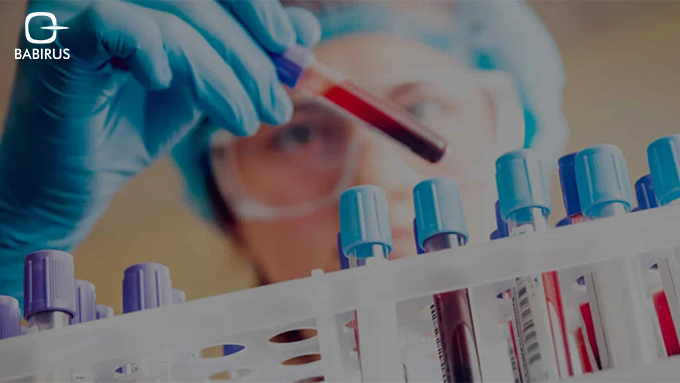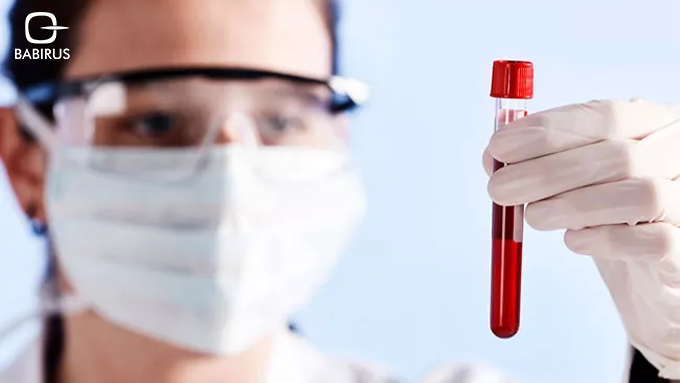Molecular Allergy Testing for Children in the UAE

When your child shows signs of allergies, whether it’s unexplained rashes, constant sneezing, or stomach discomfort, the journey to find answers can be both confusing and overwhelming. For parents in the UAE, where allergens from desert dust to exotic foods are common, understanding your child’s symptoms starts with proper testing. One of the most powerful tools available today is molecular allergy testing.
Unlike traditional allergy tests that provide general answers, molecular allergy testing drills down to the specific proteins within allergens that trigger reactions. This advanced method is especially useful for pediatric patients, where accurate diagnosis can prevent unnecessary dietary restrictions, reduce anxiety, and lead to more effective treatment plans.
In this guide, we’ll explain how molecular allergy testing works, why it matters, how it’s done, and what you can expect as a parent seeking clarity and solutions for your child.
What Is Molecular Allergy Testing?
Molecular allergy testing identifies specific allergen components, the proteins or molecules within an allergen that cause immune reactions. Unlike conventional methods that test for whole allergens (e.g., peanuts, milk), molecular allergy tests can pinpoint whether a child reacts to a particular protein within that allergen.
For instance, if a child is allergic to peanuts, this test reveals whether it’s the protein Ara h 1, Ara h 2, or another component. Some components are linked with mild symptoms, while others are associated with severe, potentially life-threatening reactions.
This approach helps differentiate between genuine allergies and cross-reactions. It is particularly useful in cases where skin prick or standard blood tests produce ambiguous or false-positive results.
Why It’s Important for Children
Children can’t always articulate what they feel. A toddler may cry after eating a certain food, but was it a reaction to dairy, a stomach bug, or something else? Traditional allergy tests can sometimes raise more questions than they answer, especially when they show general sensitivity without specifying how serious it is.
Molecular allergy testing offers several benefits for pediatric patients:
- Detailed insight: Understand whether a reaction is likely to be mild, moderate, or severe.
- Clear guidance: Avoid unnecessary food eliminations that can impact nutrition.
- Early intervention: Catch allergic conditions early and monitor their development over time.
- Peace of mind: Help parents make informed decisions about their child’s diet, environment, and safety protocols.
Parents in the UAE, particularly in cities like Dubai and Abu Dhabi, are increasingly turning to molecular allergy testing because of rising allergy cases due to environmental factors and dietary diversity.
How the Test Works
Lets go through the steps of how molecular allergy testing works:
Step 1: Consultation
A pediatric allergist or immunologist first evaluates your child’s medical history and symptoms. This helps identify whether molecular testing is the appropriate next step.
Step 2: Blood Sample
A small blood sample is taken from your child. This is generally more comfortable and less stressful than multiple skin pricks. The sample is then analyzed using technologies like MADx Alex 2, which can test against hundreds of allergen components from a single sample.
Step 3: Analysis and Reporting
Platforms like MADx Alex 2 run component-resolved diagnostics to produce a detailed profile of your child’s sensitivities. The report outlines which proteins cause reactions, their severity, and how they relate to different food and environmental allergens.
Step 4: Clinical Interpretation
Your healthcare provider interprets the report and uses the data to create a personalized management plan. This may include dietary adjustments, environmental changes, and if necessary, emergency plans such as carrying an epinephrine injector.
Real-Life Example: Clarifying a Milk Allergy
Suppose your child has shown signs of discomfort after drinking milk. A traditional allergy test might show a reaction to “dairy,” leading you to remove all dairy products. However, molecular allergy testing may reveal that your child is reacting specifically to β-lactoglobulin, a whey protein found in cow’s milk.
This means they might still tolerate other forms of dairy, such as goat’s milk or certain fermented products, without issue. This level of detail can drastically improve a child’s quality of life by preventing unnecessary dietary limitations.
Food Allergies vs. Food Intolerances
It’s important to distinguish between food allergies and intolerances. Food intolerance typically involves the digestive system and is not immune-related. Symptoms may include bloating, gas, or stomach pain, and often appear hours after consuming the food.
Food allergies, on the other hand, are immune responses that occur rapidly and can be life-threatening. Molecular allergy testing focuses on immune responses and is not used for detecting food intolerances.
For food intolerance testing, platforms like FoodPrint are used. These tests detect IgG antibodies and help uncover foods that may be causing chronic digestive or systemic issues.
Pediatric Allergy Testing in the UAE
Dubai and other UAE cities have seen increased demand for pediatric allergy testing due to rising awareness and environmental triggers. Dust, pollen, mold, and imported food products can all act as allergens, and children are often the most vulnerable.
Several clinics now offer allergy tests for kids in Dubai, including component-resolved diagnostics using MADx Alex 2 or similar technologies. When choosing a provider, it’s advisable to:
- Ensure the clinic is experienced in pediatric allergy testing
- Confirm that molecular allergy platforms like MADx Alex 2 are in use
- Look for facilities that provide comprehensive follow-up consultations
Molecular allergy UAE diagnostics are now available in both private pediatric clinics and specialized allergy centers.
What Makes MADx Allergy Testing Unique
MADx Alex 2 (Allergy Xplorer) is one of the leading systems used in molecular allergy testing. What sets it apart is its ability to detect more than 300 allergen components in a single panel. This is particularly valuable for children, as it minimizes discomfort and provides a wide diagnostic overview from just one sample.
Key features of MADx Alex 2 testing include:
- High sensitivity and specificity
- Reduced cross-reactivity errors
- Comprehensive panels for food, environmental, and venom allergies
- Detailed risk profiling for severe allergic reactions
By understanding which specific components are involved, MADx Alex 2 enables precise diagnosis and helps avoid both over-treatment and under-treatment.
Symptoms That May Indicate a Need for Allergy Testing
If your child displays any of the following symptoms on a recurring basis, consider speaking with a healthcare provider about molecular allergy testing:
- Skin rashes or hives after eating certain foods
- Runny nose, sneezing, or itchy eyes not linked to colds
- Stomach pain or vomiting after meals
- Wheezing or coughing, especially during seasonal changes
- Chronic eczema or unexplained skin inflammation
- Behavioral changes linked with meals (fatigue, hyperactivity)
These symptoms may be tied to children allergy symptoms that go undiagnosed or are mistaken for other issues like infections or food poisoning.
What Happens After Receiving the Test Results
Getting the test results is just the beginning. What you do next is equally important.
- Review the full profile with your allergist to understand both severe and mild reactions.
- Discuss which allergens can be tolerated in small amounts or processed forms.
- Work with a nutritionist if food allergies are identified, to ensure your child’s diet remains balanced.
- Educate caregivers and schools about your child’s allergies and what to do in case of a reaction.
This approach transforms what could be a scary diagnosis into a manageable lifestyle. It also builds your child’s confidence, knowing that their allergies are understood and under control.
The Future of Molecular Allergy Testing in the UAE
Molecular allergy testing is becoming the gold standard in modern diagnostics, and the UAE is embracing this technology at a fast pace. With greater access to MADx Alex 2 and similar platforms, parents can now obtain a much clearer picture of their child’s health without repeated or invasive procedures.
As awareness grows, it is likely that molecular testing will become a first-line diagnostic tool for pediatric allergy assessment. It offers both scientific precision and practical peace of mind, two things every parent is looking for.
Final Thoughts,
Parenting a child with allergies is a journey filled with uncertainties. But thanks to advancements like molecular allergy testing, those uncertainties are shrinking. If your child shows signs of allergic reactions, or if you simply want clearer answers than what traditional testing has offered, consider molecular testing as your next step.
In a place as diverse and dynamic as the UAE, where global food options and environmental triggers are everywhere, having precise information is more than helpful, it’s essential.
With molecular allergy testing, you’re not just identifying allergens. You’re unlocking a tailored, science-based path to better health and peace of mind for your child.


